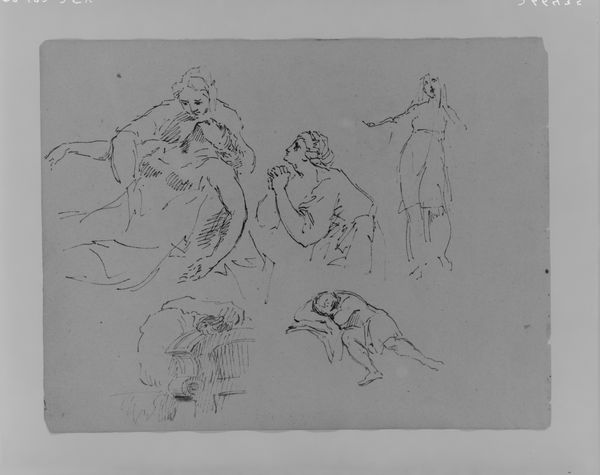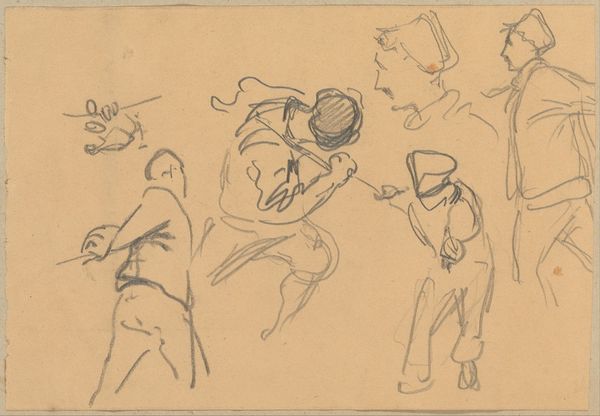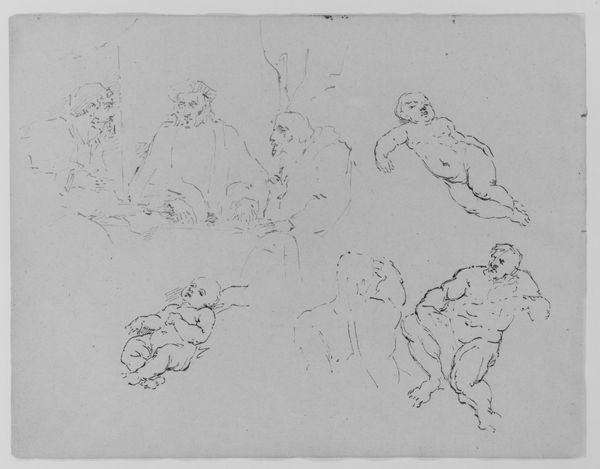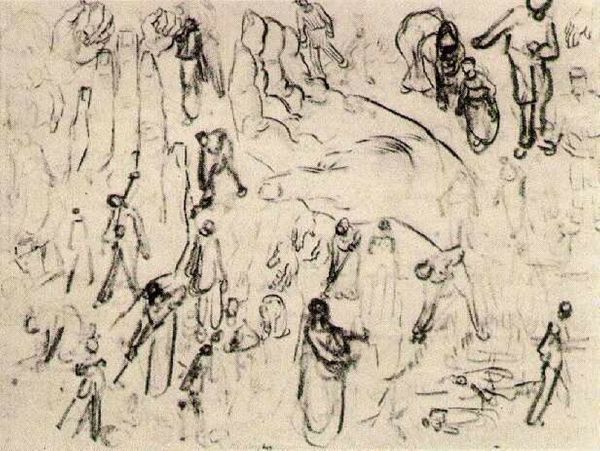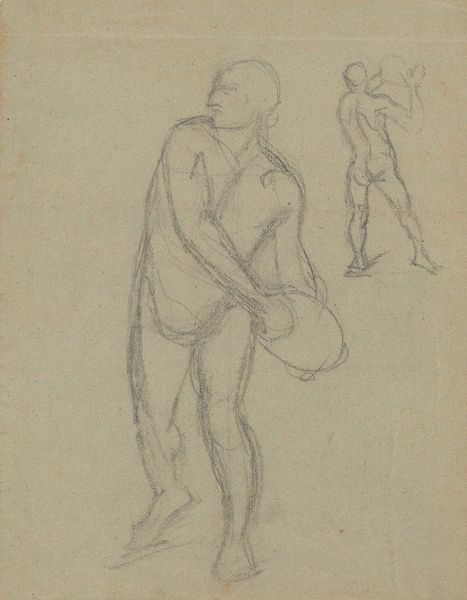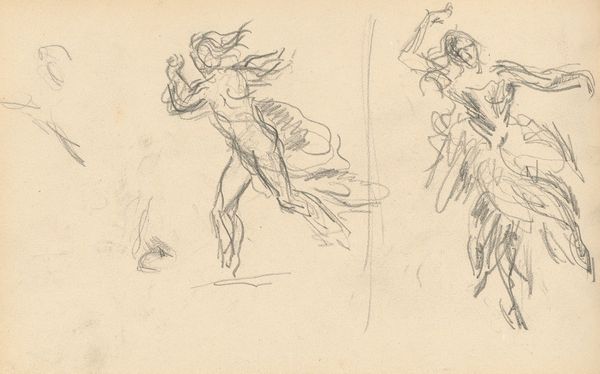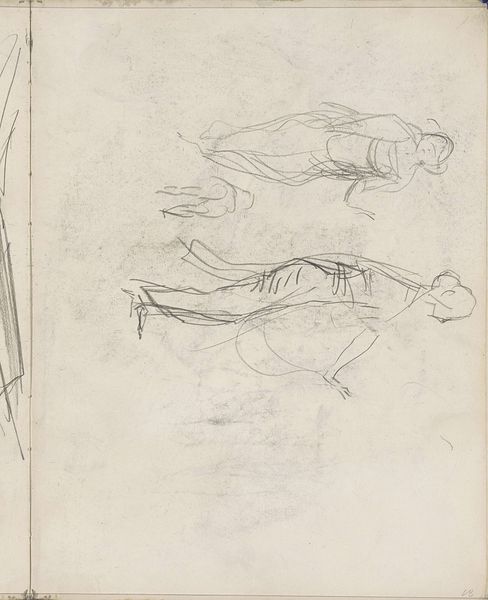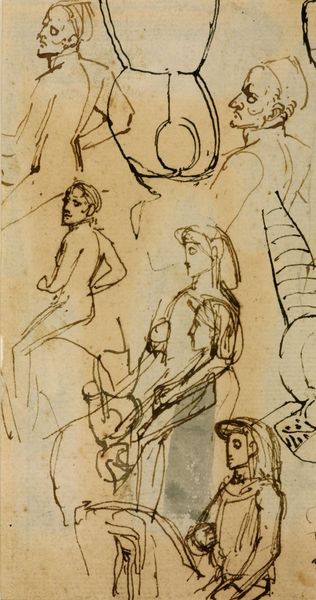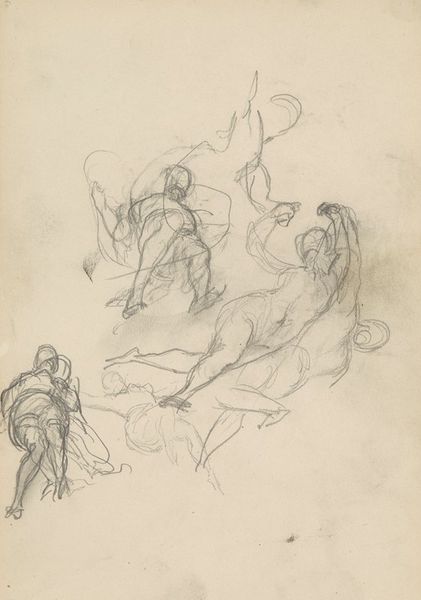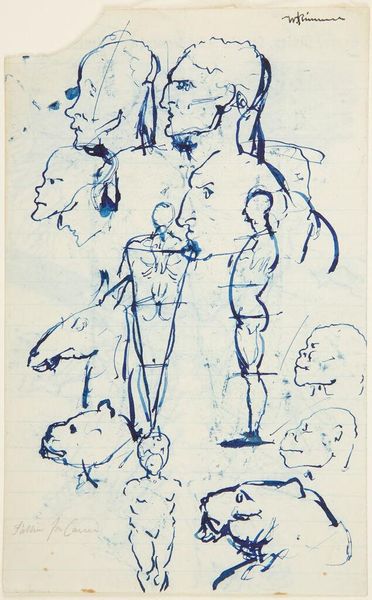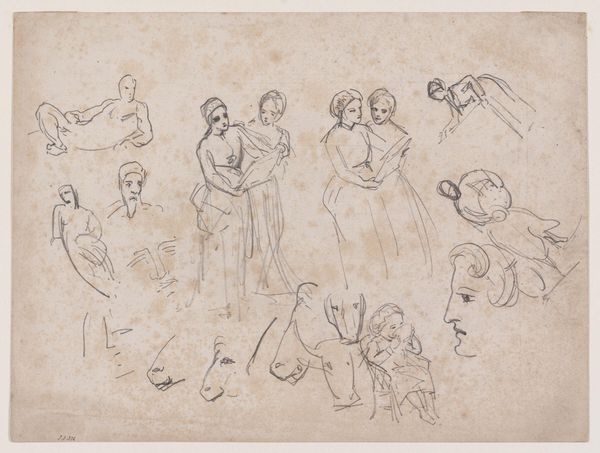
drawing, pencil
#
drawing
#
impressionism
#
landscape
#
figuration
#
pencil
Copyright: Public domain
Editor: Here we have Van Gogh's "Six Sketches of Figures, Among Others a Man Sowing Wheat," created in 1890 using pencil. The rapid, almost frantic linework makes me feel a sense of restless energy, and also anxiety about the manual labour being portrayed. What do you see in this piece? Curator: Beyond the immediacy of the sketch, consider the historical context. Van Gogh had a deep empathy for rural laborers, seeing them as fundamentally connected to the land. His repeated sketches of sowing reflect the cyclical nature of life and work, and we should analyze if they can serve as social commentary, or if this representation romanticizes an impoverished populace. Editor: Social commentary? Is that reflected in the loose, seemingly unfinished style of the sketch? Curator: Potentially. It can represent social disruption. It is key to ask, how would it have been interpreted by audiences of that period? Or is this style due to him sketching these outside in their working environment? Also, who were the subjects that van Gogh chose to immortalize? Editor: So, you are questioning whether his vision accurately represents these workers' lives or perpetuates certain stereotypes or glamorizations? Curator: Exactly. Think about how art institutions can shape our understanding and memory of events. Museums preserve art based on its artistic value but may omit social narratives. What has been overlooked that we now have the opportunity to interpret differently? Editor: That's a great reminder. It seems that considering not just *what* Van Gogh depicted but *how* and *why* allows us to look critically at both the art and the broader historical context, asking what those pencil strokes truly tell us. Curator: Precisely. And perhaps reveal more about us as interpreters, today.
Comments
No comments
Be the first to comment and join the conversation on the ultimate creative platform.
